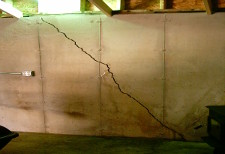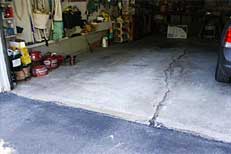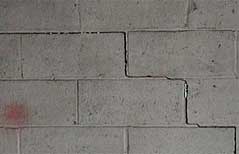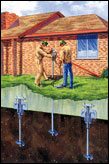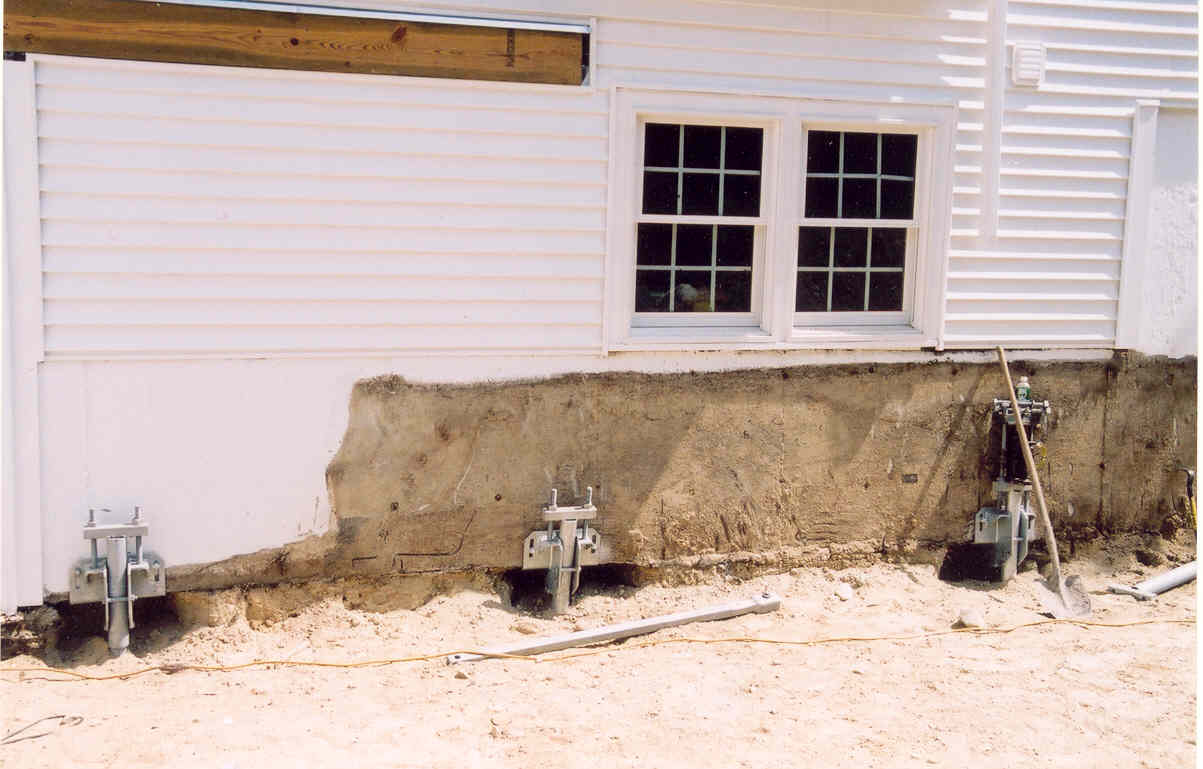Helical Pile Foundation Repair Solution
Helical pile foundation repair is a process of stabilizing and repairing foundations using helical piles. Helical piles are deep foundation elements that consist of a steel shaft with helical plates or blades welded onto it. These piles are screwed into the soil to support and stabilize the foundation.
The process of helical pile foundation repair involves several steps, including:
- Assessment: A foundation repair expert will inspect the foundation and assess the extent of damage and the underlying cause of the problem. This will help determine if helical piles are the best solution.
- Design: The design of the helical pile system is customized to fit the specific needs of the foundation repair project. Factors like soil type, load requirements, and building structure are considered during the design process.
- Installation: The helical piles are installed by drilling them into the soil using specialized equipment. The helical plates on the pile provide support and stability by creating a screw-like grip in the soil.
- Testing: The installed helical piles are tested to ensure they can support the load of the structure. Load testing is done to verify that the piles can resist the required loads.
- Adjustment: If necessary, adjustments are made to the helical pile system to ensure that it is providing the required support and stability.
Helical pile foundation repair is a reliable and effective solution for foundation problems caused by settlement, soil erosion, and other issues. It is often less invasive than other foundation repair methods and can be completed quickly, minimizing disruption to the building occupants.
Helical pile foundations have several benefits when it comes to repair work. Here are some of the key benefits:
- Cost-effective: Helical pile foundations are generally a more cost-effective solution than other types of foundation repair methods. This is because they can be installed more quickly and with less disruption to the surrounding area.
- Versatile: Helical pile foundations can be used to repair a wide range of foundation problems, including settling, sinking, and shifting. They are also effective for stabilizing foundations that have been damaged by earthquakes, floods, or other natural disasters.
- Durable: Helical pile foundations are highly durable and long-lasting. They are designed to resist corrosion, and they can withstand extreme temperatures and weather conditions.
- Minimal disruption: Helical pile foundations can be installed with minimal disruption to the surrounding area. They require no excavation or heavy equipment, which means that they can be installed quickly and with minimal disturbance to the site.
- Environmentally friendly: Helical pile foundations are an environmentally friendly solution, as they have a minimal impact on the surrounding ecosystem. They are also recyclable, which means that they can be reused in other applications once they reach the end of their useful life.
Overall, helical pile foundations offer several benefits when it comes to foundation repair work. They are cost-effective, versatile, durable, and environmentally friendly, making them an excellent choice for many different types of repair projects.
Signs that your foundation needs to be stabilized
In a sinking house, the foundation tends to crack, bow and buckle walls and uneven the floors which are problems commonly faced annually by some quarter-million home owners. Homes and other structures may settle when situated on unstable or soft soils. A shifting foundation can result in structural damage to your home and a loss of your investment.
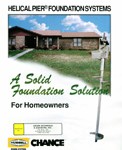 Helical Pier Installation Brochure |
When our AB Chance certified helical pile installer has received the plan of repair from a qualified design group or individual, he can proceed with the basement/foundation repair. Remember, one of the best investments you can make is to get a soil boring on your property. This will enable the designer to determine what type of anchor and to what depth it must go to stable soil. Two of the commonly used methods are (1) underpinning the section of the foundation that's settling or (2) the use of helical tieback anchors for basement walls that appear to be buckling. Usually the helical pile installer will excavate a hole at each anchor location wide enough and deep enough to place a bracket under the foundation. The leading section of the anchor with the proper number and size of helices will be installed by a rotary installing machine. Extensions are added until the helices are at the proper depth and the predetermined torque is achieved. At that point the bracket is added, the load is transferred to the anchor, and the building can be stabilized or lifted according to the plan of repair.
Solid Earth Technologies, Inc. offers solutions for foundation repair that will make your home last a lifetime. Our Helical Pier Foundation System stabilizes the foundation without damaging the existing structure or the landscaping. We have an extensive list of satisfied customers and will furnish home owner references on request.
If you have a house settling and need further assistance, please use our form to contact one of our helical pier installation specialists.

